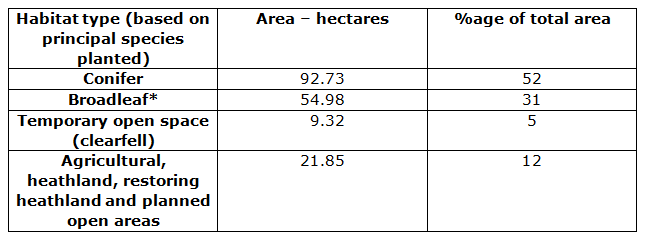Sand Hutton Forest Plan
About
Sand Hutton woodlands straddle the A64 York to Scarborough road, on the north-east edge of the City of York. The total area of Sand Hutton woodlands is 168.2 hectares with much of the surrounding land being arable farmland.
The woods sit within the Vale of York where the land is flat and tree cover restricts views and can in places give the woodland a sense of enclosure. The woods are also leasehold woodlands where the owner has retained sporting rights and exercise these through a number of shooting syndicates.
A bridleway runs through the middle of White Sike Plantation and along the western edge of Whey Carr Plantation. The woods have no designated footpaths within or adjacent to the plantations and, due to their leasehold nature are not registered as open access to the public.
Objectives
Sand Hutton is predominantly a mixed species woodland of conifer and broadleaf trees although a significant proportion of the Grange Wood plantation is classified as an Ancient Woodland site. Sustainable timber production will be a priority objective for these woods.
Environmental
- Restore lowland heath and appropriately manage the heath to achieve a favourable condition.
- Restore Ancient Woodland sites to native broadleaf species through gradual removal of non-native trees.
- Consider alternative main tree species that will contribute toward timber production where production can be improved.
Social
- N/A due to terms of lease
Economic
- Maximise and maintain a sustainable supply of timber from site-appropriate conifer and broadleaf species.
- Explore alternative species of tree that can contribute to timber production.
What we’ll do
The current plan outlines management proposals including felling and restocking over several decades, with felling licence approval for operations up until 2021.
The planned areas of clearfelling and restocking during the ten years to 2021 are shown in the table below:
Corsican pine is no longer considered for restocking due to the impact of Red Band Needle Blight. Also, Western hemlock is no longer considered appropriate for restocking due to its poor timber quality and its invasive nature through natural regeneration.
In areas where the restoration and protection of the heathland understorey is desirable then Scots Pine will be the preferred species


